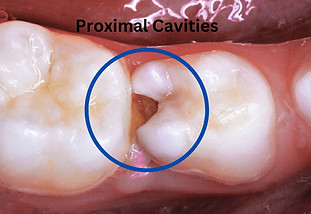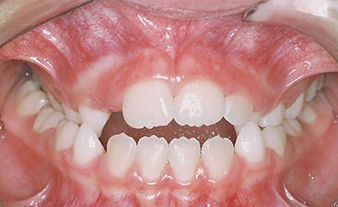
Beyond Braces: Effective Alternatives for Kids' Orthodontic Treatment
"Braces are considered the final option for aligning teeth and jaws, only if all other opportunities to correct them have been missed"
Why Go Beyond Braces?
Traditional braces are effective but not always the first or best choice for every child. Orthodontics has evolved to offer early intervention strategies that can prevent complex treatments later. Parents in Dubai and Sharjah increasingly seek age-appropriate, less invasive alternatives to help their children achieve beautiful, functional smiles.
Why Early Treatment Matters in Growing Children
Early orthodontic treatment plays a crucial role in shaping a child’s future smile and overall health. For growing children, timely care helps:
-
Provide adequate space for erupting teeth
-
Correct jaw alignment
-
Support healthy facial structure development
Early treatment, also called interceptive orthodontics, addresses jaw growth, tooth positioning, and functional appliance therapy in growing children. Starting orthodontics before age 10 can prevent long-term complications and reduce the need for jaw surgery or second-phase treatments.
Age-Wise Alternatives to Braces
Ages 5–8: Cavity Control & Space Maintainers


Healthy milk teeth maintain the space for permanent teeth




-
Goal: Prevent teeth from shifting into incorrect positions
-
Tools: Monitoring baby teeth, cavity control, and space maintainers
Ages 5–10: Supernumerary Teeth Removal & Facial Growth Appliances
Examine for any extra or additional teeth, as well as supernumerary teeth.


The alignment of other teeth may be disrupted by the presence of an extra tooth.
-
Why: Extra or delayed baby teeth can block proper eruption
-
Treatment: Remove supernumerary teeth and use early growth appliances to stimulate balanced jaw development
Age: 5-10 Years
Examine the alignment of the upper jaw in relation to the lower jaw.

The lower jaw is positioned more forwardly than the upper jaw.
Examine the alignment of both the upper and lower teeth

The upper front tooth rests behind the lower front tooth when biting.
Immediate orthodontist intervention is recommended
-
This condition is called Class III malocclusion.
-
This is due to upper jaw growth deficiency.
-
If the correction is not done before the age of 10, surgical intervention can only be considered after reaching 18 years of age.
Treatment option: Face Mask orthodontic appliance

-
Orthodontic face mask treatment can be utilized to alter the growth of the upper jaw, typically when the child is between 9-10 years old.
-
Surgical intervention can only be considered if the correction is not done before the age of 10, and only after reaching 18 years of age.
Ages 5–12: Palatal Expanders
Narrow Upper arch

Upper back teeth are placed inside the lower back teeth (Ideally, the upper back teeth are positioned to be more outward than the lower teeth).
Expansion with palatal expanders

Benefits:
-
Widen narrow upper jaw
-
Improve breathing & symmetry
-
Allow eruption of crowded upper teeth
Mechanism: Uses an expansion screw to create desired expansion and correct crossbites
It can also resolve upper front teeth crossbites and teeth crossbites commonly seen in growing children with narrow arches.
Ages 7–9: Serial Extractions
Severe crowding in the upper and lower front teeth

Serial Extractions
-
Strategy: Timed removal of specific baby teeth to reduce future crowding
-
Result: Creates more space for lower front teeth, minimizing need for braces later
-
Planned removal of baby teeth allows proper eruption of lower front teeth, reducing the need for aggressive correction later.
-
This is especially helpful in patients with crooked teeth or excessively spaced teeth due to premature baby tooth loss.
Ages 9–12: Functional Appliances (Twin-Block, Herbst)
Examine the alignment of the lower jaw in relation to the upper jaw.

Immediate orthodontist intervention is necessary.


-
Indication: Class II correction and lower jaw deficiency
-
Effect: Moves the lower jaw forward and improves facial profile
-
Appliances: Twin Block appliance, removable functional appliances, mandibular anterior repositioning appliances
-
Other functional appliances like the Bionator or MARA are also used to guide the lower jaw forward in Class II correction cases. In addition to Twin Block and Herbst, other functional appliances like the Bionator and MARA offer options depending on patient comfort and case needs.
-
These devices reduce unwanted jaw shifts and improve symmetry during growth.
Post-10 Years: Braces or Invisalign
Once all of your permanent teeth have fully emerged, you are eligible to have braces.
Diagnose your dental condition by examining the images provided below.

Crowding

Posterior Openbite

Large overjet

DeepBite

Posterior Crossbite

Anterior Openbite

Anterior Crossbite
Treatment option: Braces or Invisalign
-
Options:
-
Invisalign for aesthetic, removable correction
-
Metal braces for complex or severe cases
-
In severe cases where jaw position or tooth movement is complex, metal braces often outperform Invisalign.
-
Invisalign is ideal for mild to moderate corrections but may not be suitable for complex cases involving skeletal discrepancies.
-
Treatment time: 12–24 months depending on case
Teenage Growth Phase: Growth Modifiers
-
Devices: Headgear, chin cups, skeletal anchorage (mini screws)
-
Goal: Growth modification and jaw correction during puberty
During Active growth
Age: 11 to 17 years
Observe lower jaw growth and position

Growth Modification & Jaw Development
Growth modification targets jaw growth in children to avoid jaw surgery later. Devices for bite opening, correcting abnormal swallowing, and repositioning the lower jaw enhance upper and lower teeth alignment. Some appliances are tooth-borne, while others involve skeletal anchorage. Balanced upper lip posture also influences facial development and overall health.

Chin Cup
Comparison Table: Alternatives to Braces
FAQs: Parents Often Ask
Q: What is the best alternative to braces for kids?
Clear aligners, palatal expanders, or functional appliances—depending on your child’s age and growth.
Q: What is early stage orthodontic treatment?
It’s interceptive treatment started before all permanent teeth erupt to manage jaw growth and spacing.
Q: What is orthodontic treatment for 7 year olds?
Common options include space maintainers and early growth appliances to prevent complex future corrections.
Q: What is the best age for functional appliances?
Ages 9–12 are ideal—before the growth spurt ends, for best jaw correction results.
Q: What are functional appliances?
Orthodontic tools like the Twin Block or Herbst appliance used to align jaws and improve facial balance.
Q: Can children get Invisalign?
Yes. Invisalign First is designed for children with mixed dentition but requires discipline and routine wear.
Q: How painful is a palate expander?
Mild pressure is common for a few days; discomfort reduces quickly as the child adjusts.
Q: How long does a palatal expander take to work?
2–4 weeks of active expansion, plus 3–6 months of retention to stabilize results.
Real Patient Experience
Case: A 9-year-old with lower jaw deficiency was treated using a Twin-Block appliance.
Outcome: Improved chin projection and jaw balance, avoiding future jaw surgery.
Final Thoughts
Orthodontics isn’t just about straightening teeth. It’s about timing, growth, and prevention.
According to the American Association of Orthodontists, early intervention gives your child the best chance at a healthy, beautiful smile. With a personalized treatment plan, your child can avoid severe complications later and achieve a confident outcome.
Early orthodontic care also improves self-esteem and helps children maintain a healthy bite and a healthy smile for life.
Early intervention leads to measurable improvement in jaw balance, facial profile, and overall function. With the right treatment, children can achieve long-term stability and a naturally aligned bite.
👉 Book Your Child's Smile Assessment Today